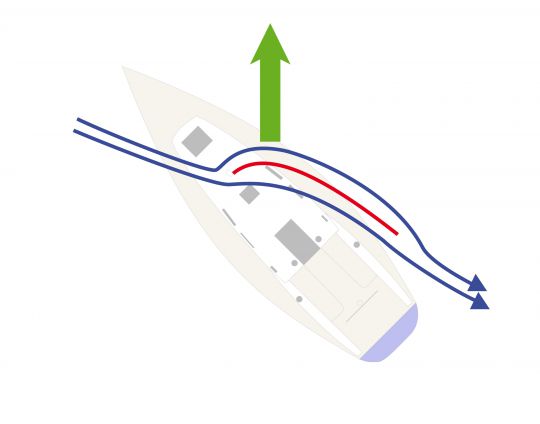It's a little magical. A modern sailboat can win in the wind. They say it goes upwind. As simple as it is to understand that downwind the wind pushes a boat. You can experiment in your bathtub: put a floating object on the water and blow, you will see that it advances, pushed by the wind.
But by what mystery, it is possible to go upwind. This is explained by the shape of the sail which works on the same principle as an airplane wing. The principle (called the Bernouilli principle in physics) is based on the pressure difference between the two sides of the sail.

On our sailboat diagram, the sail is shown in red.
The blue wind is coming from the left. Arrived against the sail, it will have to separate into 2 flows: one flow goes around the sail from the outside (top surface), the other goes through the inside (bottom surface). The path of these two flows does not have the same length or at the exit of the sail (on the right) the two flows must arrive at the same time.
This means that the flow outside the sail must be faster than from the inside. By accelerating outside, this flow creates a vacuum that sucks up the sail. Conversely, the flow inside must slow down. By slowing down the flow creates an overpressure which inflates the sail.
These pressure differences between the two sides of the sail create a pushing force (green arrow) that pulls the sailboat forward. The sailboat's moving!
Of course for this pushing force (green arrow) to be optimum, these sails must be correctly adjusted.

















